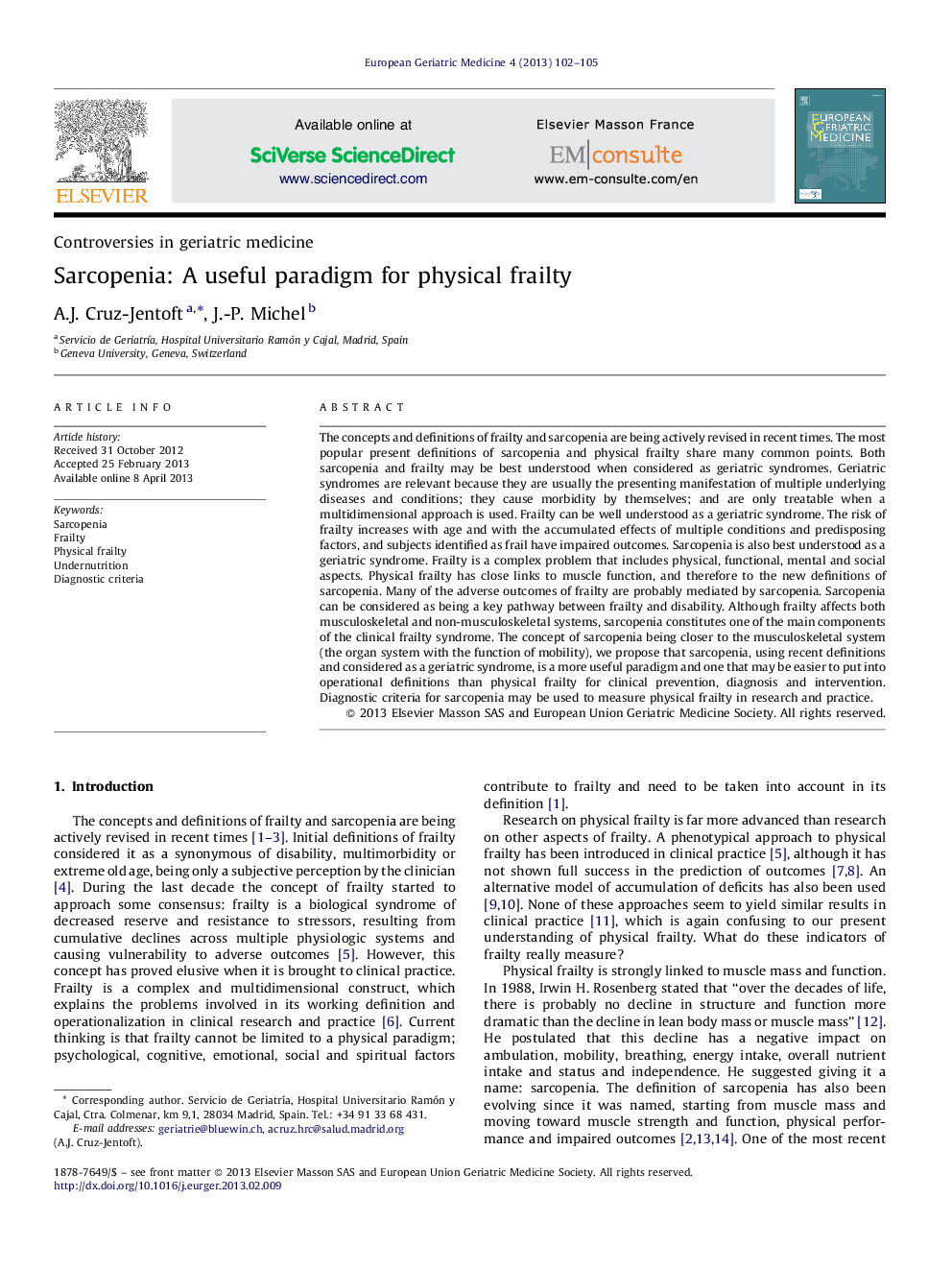| Article ID | Journal | Published Year | Pages | File Type |
|---|---|---|---|---|
| 3324256 | European Geriatric Medicine | 2013 | 4 Pages |
The concepts and definitions of frailty and sarcopenia are being actively revised in recent times. The most popular present definitions of sarcopenia and physical frailty share many common points. Both sarcopenia and frailty may be best understood when considered as geriatric syndromes. Geriatric syndromes are relevant because they are usually the presenting manifestation of multiple underlying diseases and conditions; they cause morbidity by themselves; and are only treatable when a multidimensional approach is used. Frailty can be well understood as a geriatric syndrome. The risk of frailty increases with age and with the accumulated effects of multiple conditions and predisposing factors, and subjects identified as frail have impaired outcomes. Sarcopenia is also best understood as a geriatric syndrome. Frailty is a complex problem that includes physical, functional, mental and social aspects. Physical frailty has close links to muscle function, and therefore to the new definitions of sarcopenia. Many of the adverse outcomes of frailty are probably mediated by sarcopenia. Sarcopenia can be considered as being a key pathway between frailty and disability. Although frailty affects both musculoskeletal and non-musculoskeletal systems, sarcopenia constitutes one of the main components of the clinical frailty syndrome. The concept of sarcopenia being closer to the musculoskeletal system (the organ system with the function of mobility), we propose that sarcopenia, using recent definitions and considered as a geriatric syndrome, is a more useful paradigm and one that may be easier to put into operational definitions than physical frailty for clinical prevention, diagnosis and intervention. Diagnostic criteria for sarcopenia may be used to measure physical frailty in research and practice.
